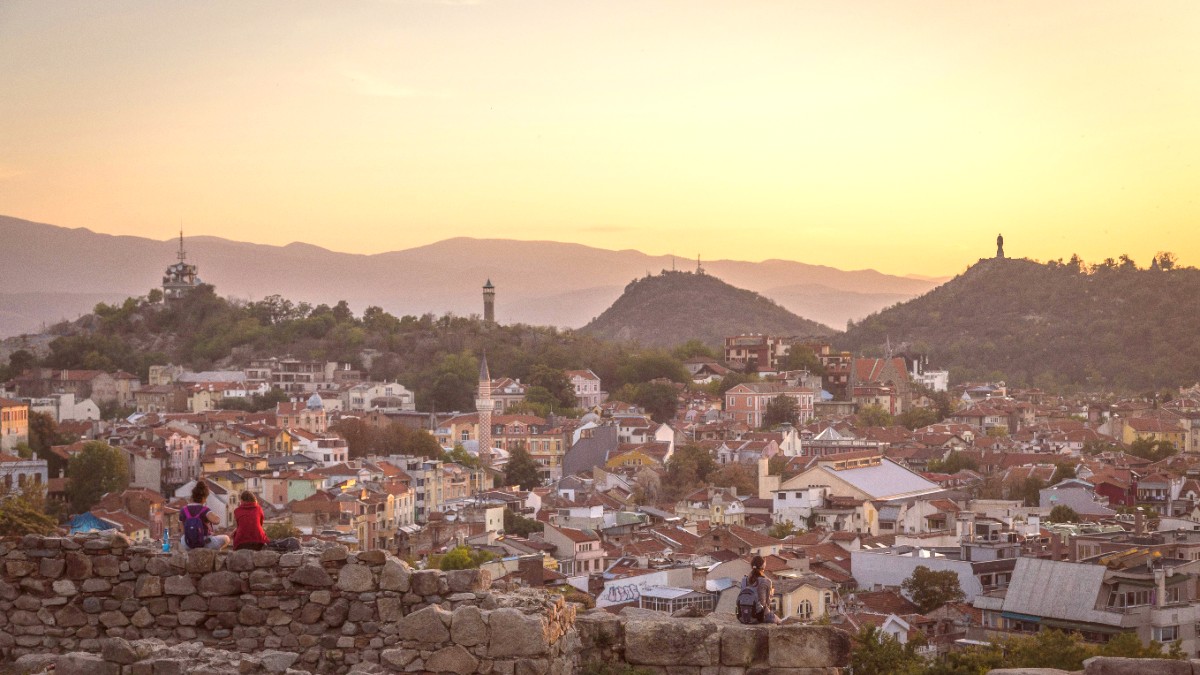
Plovdiv And Rodopi Mountains, Bulgaria
The city boasts remarkably preserved ancient structures, alongside historic districts. Each landmark offers an unique glimpse into Plovdiv's continuity through Thracian, Roman, and Ottoman eras.
These sites are not just relics; they often host modern events, merging past and present in a distinct way.
Secret Viewpoints: Danov Hill (Bunardzhik) and Sahat Tepe (Clock Tower Hill) also offer excellent, less crowded, panoramic views.
Many Old Town museums are in historical houses. Observe the architecture and interior design as much as the exhibits.
Check Plovdiv 24/7 or This is Plovdiv for temporary exhibitions, festivals, and cultural programs.
Night of Museums and Galleries (September) is a major cultural event.
Boris Hristov House of Culture, Plovdiv Drama Theatre, State Opera Plovdiv, and the Ancient Theatre host various performances.
Plovdiv's long history is visible in its many archaeological and historical sites, offering a journey through various epochs.
Remains of early Christian basilicas with preserved mosaic floors, showing Plovdiv's Byzantine era.
Well-preserved remains of one of the main gates of the ancient city, a glimpse into Roman defensive structures.
Ancient gate in the Old Town wall, still a functional archway connecting historic districts.
The quintessential historical district, showing a blend of Bulgarian Revival, Ottoman, Roman, and Thracian styles.
Historically a craft and trade district, its narrow streets and building layouts preserve its past.
Remnants of Roman Philippopolis, including parts of the forum, amidst modern buildings.
St. Constantine and Helena Church (Old Town, oldest church), Church of the Holy Mother of God (Orthodox, city views), Dzhumaya Mosque, St. Marina Church (wood-carved iconostasis), Great Synagogue (Moorish-revival interior).
Alyosha Monument: Massive Soviet Army monument on Bunardzhik Hill, with panoramic city views. Monument of the Unknown Soldier: In the city center, remembers fallen Bulgarian soldiers.
Plovdiv has limited accessible industrial heritage sites in the city center. Nearby Asen's Fortress (see Section 10.1) is a significant military heritage site with medieval fortifications.
Many historical sites in the Old Town are within easy walking distance. Plan a route to visit several in one go, maximizing your historical exploration.
While Plovdiv is most known for its urban history, the city and its surroundings hold natural attractions, from scenic hills within the city to the nearby Rodopi Mountains.
These green spaces and geological formations offer calm escapes and unique perspectives on the city's landscape.
Tsar Simeon Garden: Central park with Singing Fountains. Central Garden (City Park): Green space near main pedestrian street. Maritsa River Bank: Pathways for walks and cycling. Rowing Canal: Large artificial lake and park for recreation.
Plovdiv's Seven Hills: Nebet Tepe (historical ruins, panoramic views), Danov Hill (Alyosha Monument, wide city views), Sahat Tepe (Clock Tower Hill, Old Town views). Rodopi Mountains: Nearby, with stunning scenery and forests.
Plovdiv hills: Unique syenite magmatic intrusions. Rodopi Mountains: Home to remarkable features like the Wonderful Bridges (Chudnite Mostove), a natural rock arch phenomenon formed by erosion.
Direct wildlife viewing in Plovdiv is limited to urban birds. Rodopi Mountains have diverse wildlife (bears, wolves, lynx), but direct encounters are rare without specialized tours. Birdwatching is more feasible. Maritsa River is not for swimming. Rowing Canal is for sports. No beaches near Plovdiv; Black Sea is 4-5 hours away.
Find Nature & Wildlife ToursPlan to visit at least one of Plovdiv's hills for sunset. The views are rewarding and present great photo opportunities, capturing the city's unique landscape.
Book Sunset ToursBeyond Plovdiv's well-known landmarks, the city holds several hidden gems and local favorites that offer unique perspectives and quieter experiences.
Discover spots less frequented by tourists, from artist studios to ancient Thracian complexes nearby.
Sunset from Nebet Tepe or Danov Hill capture classic panoramic city shots.
Roman Stadium's glass floor over ruins creates unique reflective perspectives. Capture dynamic street art and lively vibe of Kapana. Singing Fountains in Tsar Simeon Garden during evening shows.
Engage deeply with Plovdiv's hidden character by exploring its less-trodden paths.
Take time to wander without a strict itinerary.
The region around Plovdiv holds many fascinating sites.
Dive into Plovdiv's rich cultural narrative.
These sites collectively paint a comprehensive picture of Plovdiv's long and varied past.
Don't overlook the blend of old and new.
Observe how history is woven into the fabric of modern life.
Seek out places that tell a story.
These offer an intimate look into Plovdiv's past elite residences.
Explore Old Town's historical houses and museums for fewer crowds.
Visit the Roman Theatre and Roman Stadium, then stroll through Kapana.
Head to Nebet Tepe for sunset views and Singing Fountains in Tsar Simeon Garden.